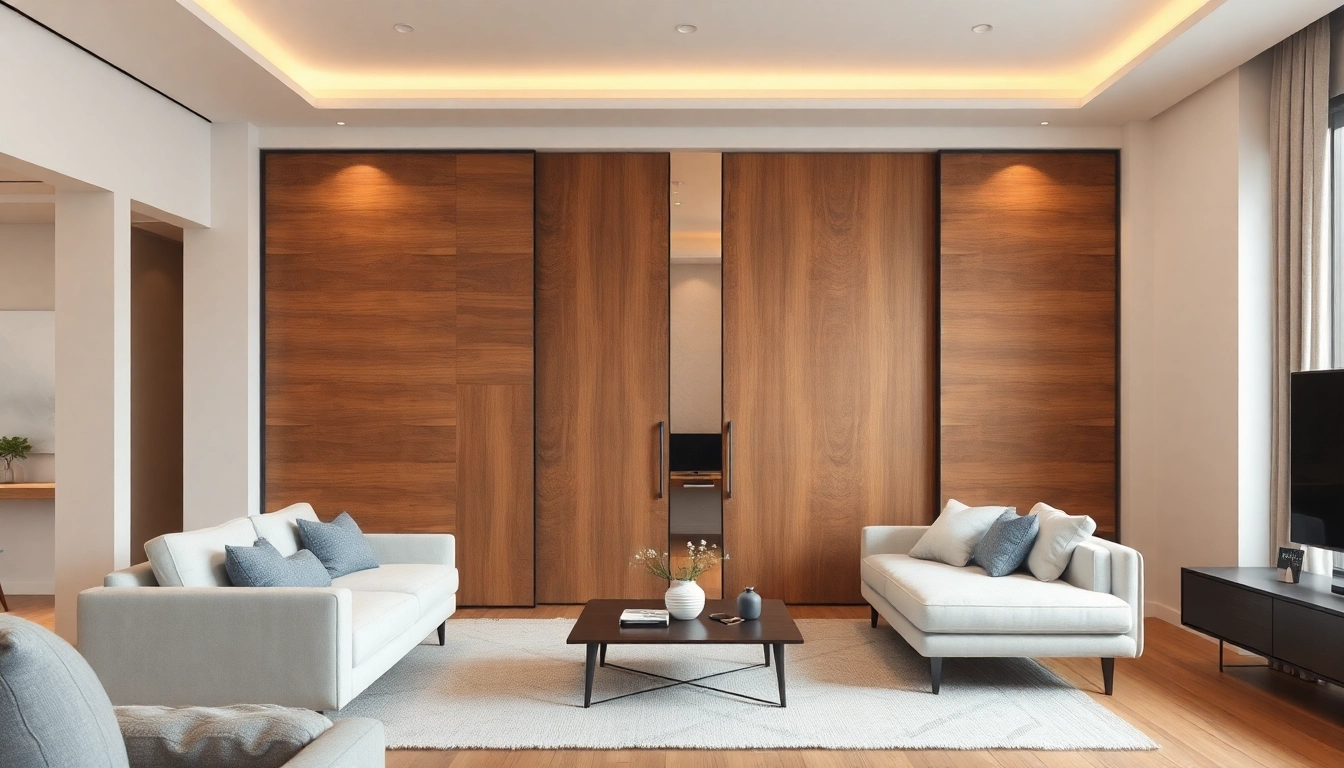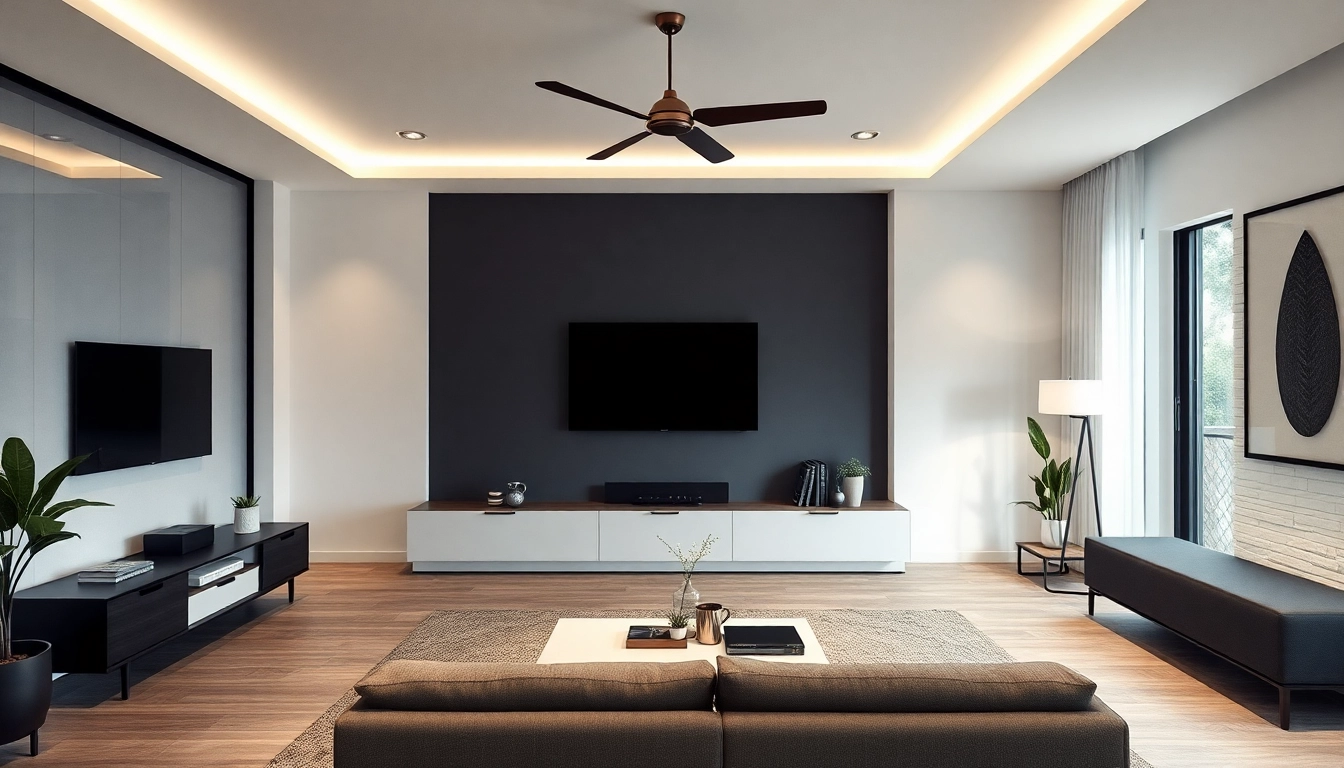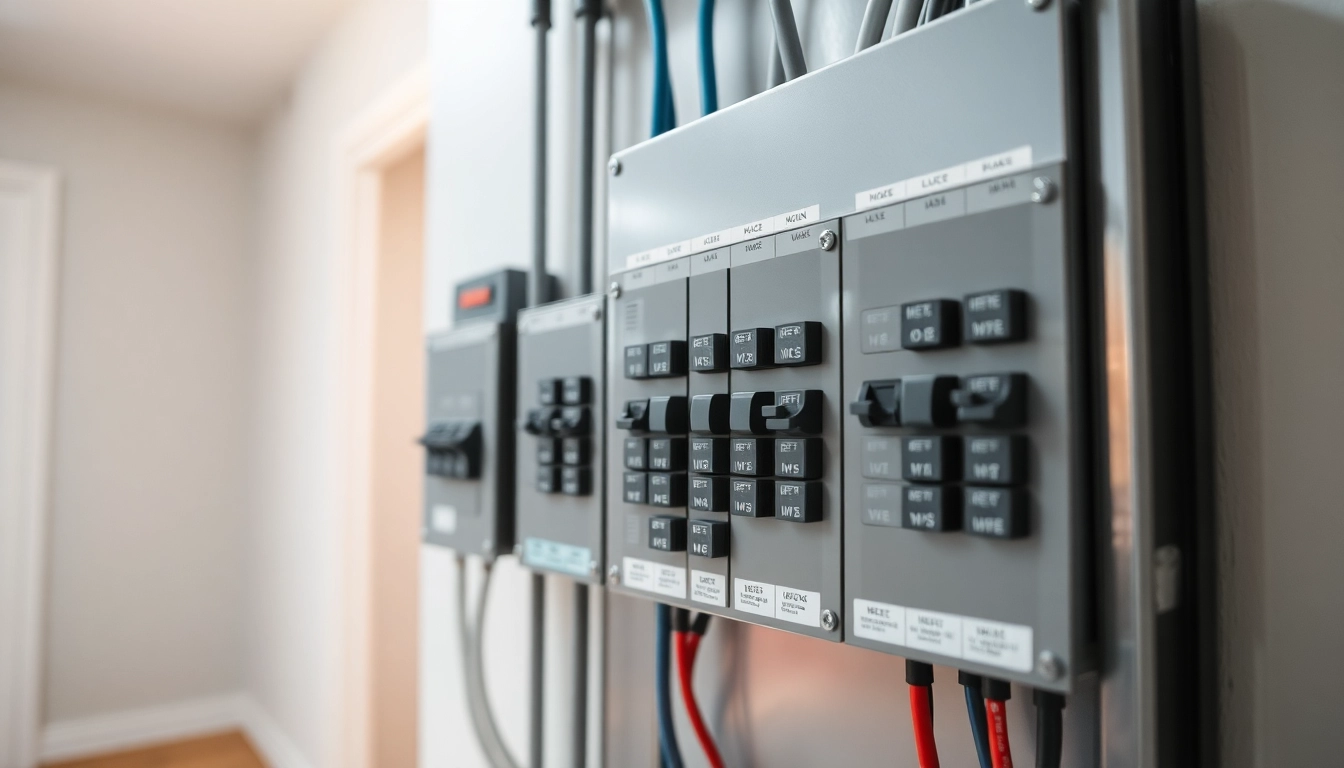Understanding Sliding Partition Walls
What is a Sliding Partition Wall?
A sliding partition wall is a versatile interior structure designed to divide spaces while allowing for flexibility in layout. Unlike fixed walls, sliding partitions can be easily moved or reconfigured to transform an area, making them an excellent choice for both residential and commercial environments. These partition walls typically operate using a track system, enabling panels to slide open and closed efficiently. The adaptability of a sliding partition wall allows rooms to serve multiple purposes, from creating private offices in open-plan spaces to forming cozy dining areas in larger kitchens.
Benefits of Sliding Partition Walls
Sliding partition walls offer a wide array of benefits that make them attractive solutions for modern interiors. Some key advantages include:
- Space Flexibility: With the ability to adapt the layout of a room, sliding partitions facilitate quick transitions between different uses, enhancing the functionality of a single space.
- Aesthetic Appeal: Available in various materials and designs, these partitions can be customized to match your interior decor, contributing to a cohesive design theme.
- Sound Reduction: Many sliding partitions are designed to provide acoustic insulation, making them ideal for conference rooms or any spaces where privacy is paramount.
- Cost-Effectiveness: Compared to traditional wall construction, sliding partitions often represent a lower investment and quicker installation process, minimizing downtime in commercial settings.
- No Permanent Changes: As a non-permanent solution, sliding walls can be removed or relocated easily if needs change, making them a smart choice for evolving workspaces.
Common Uses and Applications
Sliding partition walls are highly versatile and can be used in various settings, including:
- Office Spaces: They are frequently employed to create temporary meeting rooms or collaborative areas within open offices.
- Residential Homes: In homes, sliding partitions can separate living and dining areas or provide privacy in multi-use spaces like studios.
- Educational Institutions: Classrooms often use sliding partitions to facilitate group activities and presentations by creating flexible learning environments.
- Hospitality Venues: Hotels and restaurants utilize sliding walls to manage capacity and create intimate dining experiences.
Types of Sliding Partition Walls
Prefabricated vs. Custom Solutions
Sliding partition walls can be broadly categorized into prefabricated and custom solutions. Prefabricated systems are typically quicker to install and often come with standard sizes and finishes. They are pre-engineered for efficiency, making them a popular choice for commercial projects where budget and time constraints are paramount.
In contrast, custom sliding partitions are tailored to meet specific project requirements and aesthetic preferences. This flexibility allows for unique designs, sizes, and materials, ensuring that the solution aligns perfectly with the existing decor and functional needs of the space.
Material Options for Durability
Durability is a critical factor when selecting a sliding partition wall. Common materials include:
- Wood: Often chosen for its warmth and aesthetic appeal, wood can provide sturdy and attractive sliding partitions. However, it may require more maintenance.
- Glass: For a modern look, glass sliding partitions allow light to flow between areas and create an open feel while maintaining separation.
- Metal: Robust and minimalistic, metal partitions are incredibly durable and can lend an industrial feel to a space, often used in commercial settings.
- Composite Materials: Engineered materials can offer a balance of aesthetics and durability, often designed to mimic wood or metal while being lightweight.
Track Systems Explained
The performance of a sliding partition wall greatly depends on its track system. These systems can vary widely and are essential for the smooth operation of the partitions. Common types include:
- Ceiling-Mounted Tracks: These tracks are mounted to the ceiling, freeing up floor space while providing stability for the wall to slide along.
- Floor-Mounted Tracks: While they do require floor installation, these tracks can enhance the wall’s stability and are often used in environments where acoustic performance is a priority.
- Wall-Mounted Tracks: Convenient for home applications, these tracks can allow for quick installations without the need for extensive remodeling.
- Hidden Track Systems: For a clean aesthetic, hidden track systems are concealed within the wall structure, allowing for seamless transitions and an unobtrusive look.
Installing a Sliding Partition Wall
Preparation and Planning
Before you begin the installation of a sliding partition wall, thorough planning is essential. Key steps include:
- Assess Your Space: Measure the area where you plan to install the sliding partition. Consider the wall’s length, height, and any obstructions that might interfere with the installation.
- Choose the Right Type: Based on your intended use, select a sliding partition wall type that meets your functional and aesthetic needs.
- Gather Necessary Tools: Tools required may include a level, drill, measuring tape, saw, and fasteners. Ensuring you have everything on hand can prevent delays.
Step-by-Step Installation Guide
Installing a sliding partition wall can be a straightforward project if you follow these general steps:
- Install the Track System: Mount your chosen track system (ceiling or wall-mounted) securely, ensuring it is level to prevent the partition from hanging unevenly.
- Attach the Panels: Follow the manufacturer’s instructions to attach the sliding panels to the track, ensuring that each panel moves freely along the track.
- Trim and Finishing Touches: Add any desired trim or finishing touches to your sliding partition to enhance its aesthetic appeal and ensure it blends seamlessly with your existing decor.
Common Mistakes to Avoid
To ensure a successful installation, be mindful of these common mistakes:
- Inaccurate Measurements: Double check all measurements to prevent issues with size and fit.
- Ignoring Weight Limits: Ensure that the track system and panels are rated for their intended use, especially in commercial applications.
- Neglecting Aesthetics: Consider how the partition will fit aesthetically within the space; choosing a design that complements your surroundings can enhance the overall appearance of your decor.
Design Tips for Sliding Partition Walls
Choosing the Right Style for Your Space
The style of your sliding partition wall can significantly impact your space. Consider these styles:
- Modern: Sleek, minimalistic designs utilizing glass or polished metal can create a contemporary, airy feel.
- Rustic: Wooden finishes can infuse warmth and coziness into spaces, ideal for cottage or traditional decors.
- Industrial: Using metal and raw finishes will resonate well in urban environments, emphasizing an edgier aesthetic.
Color Palettes and Textures
The color and texture of your sliding partition wall can enhance visual interest. Neutral colors provide versatility, while bold colors can make a statement. Textured surfaces can add depth and should be considered depending on the overall design theme.
Lighting Considerations
Lighting plays a crucial role in how a space feels. If using glass partition walls, natural light can flow freely, creating a brighter atmosphere. Additionally, consider installing lighting fixtures or using reflective materials to amplify available light in the space.
Maintaining and Using Your Sliding Partition Wall
Routine Maintenance Tips
Maintaining your sliding partition wall ensures its longevity and functionality. Regular checks should involve:
- Cleaning: Regularly dust the tracks and wipe down panels to prevent dirt buildup.
- Inspecting the Track System: Ensure the track remains free of debris and that the rollers are functioning smoothly.
- Checking Alignment: Occasionally check that the panels align correctly and adjust if necessary.
Maximizing Space Flexibility
To get the most out of your sliding partition wall:
- Use Multi-Functional Spaces: Create areas that can serve multiple purposes with the ability to open or close off room sections as needed.
- Incorporate Furniture: Select furniture that can be rearranged easily to complement the fluidity of the partition.
- Plan for Occasional Events: Consider how a space might be used differently during events and adjust your sliding walls accordingly.
Upgrading Your Partition System
As trends and needs change, you may find it beneficial to update your sliding partition system by:
- Replacing Panels: Consider updating the panels’ design or material for a fresh look.
- Enhancing Track Systems: Upgrading to a more modern or quieter track system can improve functionality.
- Adding Technology: Consider integrating smart technology, like automatic sliding mechanisms, for increased convenience.



